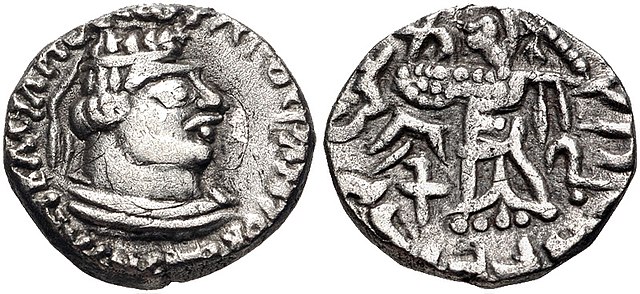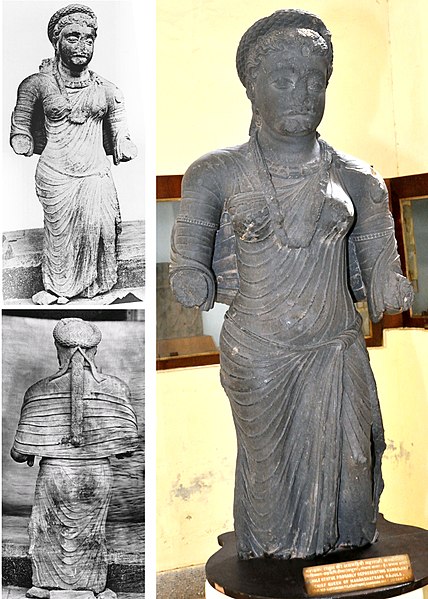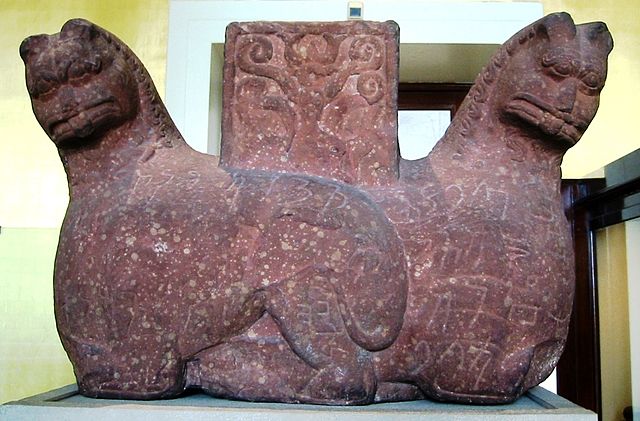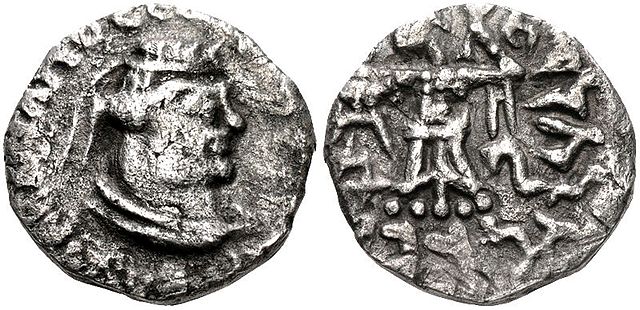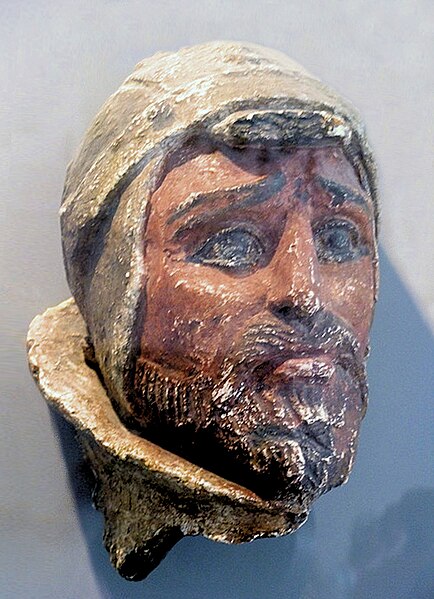Rajuvula was an Indo-Scythian Great Satrap (Mahākṣatrapa), one of the "Northern Satraps" who ruled in the area of Mathura in the northern Indian Subcontinent in the years around 10 CE. The Mathura lion capital was consecrated under the reign of Rajuvula. In central India, the Indo-Scythians had conquered the area of Mathura from Indian kings around 60 BCE. Some of their satraps were Hagamasha and Hagana, who were in turn followed by Rajuvula.
Northern Satrap Rajuvula. Obv. Bust of king and Greek legend BASILEOS BASILEON SOTEROS RAZU, "Saviour King of Kings, Rajuvula". Rev. Athena Alkidemos and Kharoshthi legend Chatrapasa apratihatachakrasa rajuvulasa "the Satrap Rajuvula whose discus (cakra) is irresistible". These coins are found near Sankassa along the Ganges and in Eastern Punjab. Possibly minted in Sagala. The coins are derived from the Indo-Greek types of Strato II.
The Saptarishi Tila statue, possibly representing Kamuia Ayasa/ Kambojika, the Chief Queen of Mahakshatrapa Rajula. Found in the Saptarishi Mound, the same mound where the Mathura lion capital was found. c. 1st century CE.
The Indo-Scythian Mathura lion capital, 1st century CE, mentioning Rajuvula and his wife, Nadasi Kasa (British Museum).
Coin of Rajuvula with Greek legend and Athena Alkidemos.
The Indo-Scythians were a group of nomadic people of Iranic Scythian origin who migrated from Central Asia southward into the northwestern Indian subcontinent: the present-day South Asian regions of Afghanistan, Pakistan, Eastern Iran and northern India. The migrations persisted from the middle of the second century BCE to the fourth century CE.
Sculpted head of a Saka warrior, enemy of the Yuezhi, from Khalchayan in northern Bactria (Afghanistan), first century BCE.
Detail of one of the Orlat plaques, apparently representing Scythian soldiers
Asia in 100 BCE, showing the Saka and their neighbors
Coin of Maues depicting Balarama, 1st century BCE (British Museum)

